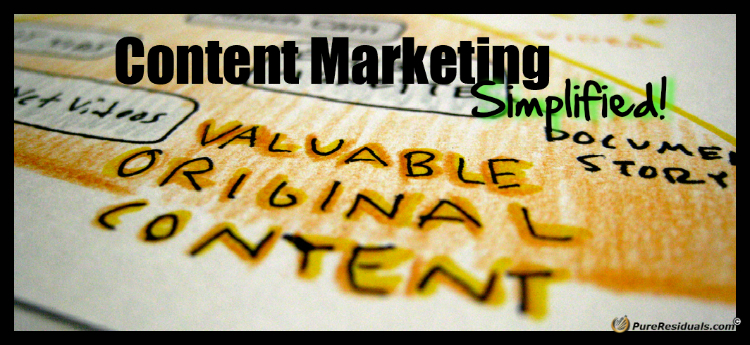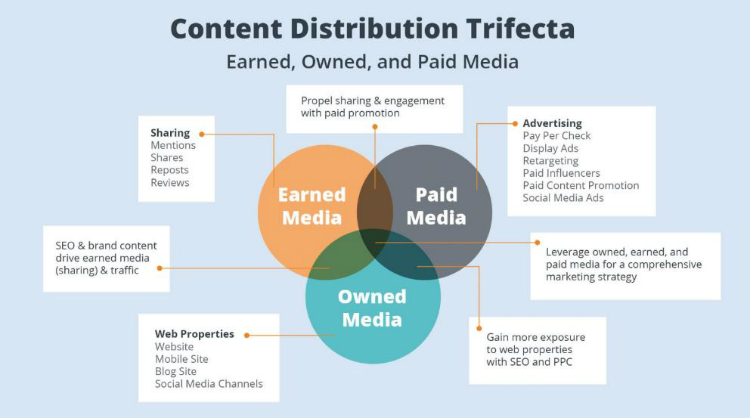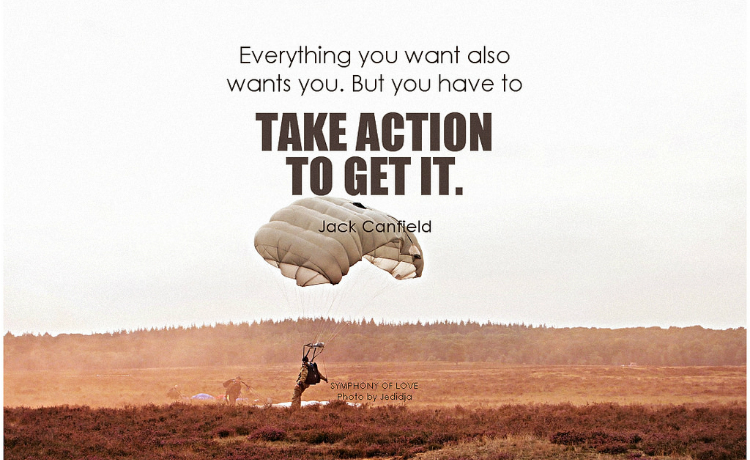Step 1: Identify your Goals so you can Optimize your Content Appropriately
What do you hope to achieve with your content marketing campaign?
Think about this question as you would ponder any other marketing goal. If your aim is to generate more leads, try to determine how many leads you need to bring in for each aspect of the campaign and what those leads should ideally look like (i.e. your target audience).
On the other hand, if increasing sales is your number one goal, content that aims at earning the interest of individuals further along on their buying cycle and that helps them make that final decision may be better suited for your strategy.
For each goal set, you should get down a list of keywords and topics that fit in with your efforts and desired outcome. Dig deep to understand the “intent” behind search phrases and keywords, can craft engaging topics around those items that are in alignment with your overall objectives.
Step 2: Decide on Distribution Channels
Knowing what type of content you want to write and what you hope to achieve through it is important, but all that is meaningless if you lack a plan on how to get your content in front of the right people, at the right time and in the right way.
Mapping out a distribution plan is best done prior to creation of the content since each distribution channel or publishing method might lead to different formatting or niches than you originally anticipated.
For instance, you’d likely need different content to create web videos than you would if you were writing weekly articles for your blog. The important thing to remember is that you should always start with your audience. What do they read? Where do they “hang out” online? And in what way do they prefer to consume information?
Which shows do they watch? What music do they listen to? Are they a fan of printed publications or have they moved onto app and web browsing? Are they the type who shares content that they find interesting or do they keep information to themselves for the most part. Which topics would they relate to the most?
How often do they want to see you put new content out? How do they want to be notified of new releases? You need to know your target audience better than they know themselves. Your target audience could include current customers, prospects, and anyone else who you can benefit from with your efforts.
If you’re not sure what type of content customers in your industry would enjoy, go have a look at which pieces of competitor content is most popular with their consumers.
Step 3: Define a Content Creation Plan
Now that you know what you want to create and how to get it out once it’s done, you’ll need to move onto the actual creation of the content. This is where most small businesses and startups often get stuck. They suffer from analysis paralysis.
Who will write the content? Film the videos? Design the marketing material? Take pictures? How do you even get everyone on one schedule and keep the whole team coordinate? Do you have any existing content that you can use for this campaign?
It’s at this point that you need to find someone who has what it takes to lead your content marketing campaign. Most big companies hire chief content officers, but that isn’t exactly feasible for startups and small businesses. Ideally, you’ll want to log and track content along its path from idea, to curation, to editing, publication and beyond. Using online employee tracking software can prove highly beneficial when dealing with multiple projects and content pieces distributed across a large team.
You could think about someone you already have on payroll, or you could outsource the work. You could even combine the two options if you find that it will lead to the most convenience and least strain on your wallet.
The first thing you should do is take inventory of what you already have. Perhaps you already have an active blog or weekly newsletter that you can use. Maybe you’ve been building up a resource section for months and you can finally utilize it.
Be sure to check your pictures and videos too as some of them might fit in with your current initiative. It’s important that you repurpose content as much as you can rather than creating new material whenever you start a new campaign.
You’ll also need to have a plan for each aspect of your content marketing campaign. For instance, you might’ve decided to start by hosting monthly webinars to bring in leads and strengthen your bond with the consumers.
You’ll need to plan out everything from the topics you’ll cover to the guest speakers you’ll bring in and what the schedule for production will be. Once you’ve got all that done, you’ll be surprised at how much easier it is to stay on top of your campaign.
Step #4: Find content ideas that are proven to convert.
Throughout the past few years. people in the marketing world have made countless breakthroughs in content production for blogs, social media, and websites. WordPress blogs are popping up faster than weeds in an abandoned garden.
A recent study showed that 86% of business-to-business marketers use content marketing to advertise their organization. Another study showed that 70% are creating much more content than they did just a year earlier.
86% of business-to-business marketers use content marketing to advertise their organizationClick To Tweet
The demand for new, useful content marketing is going through the roof. If you take the time to create a solid campaign, you’ll be able to reap the vast benefits that it has to offer. But bear in mind that the competition isn’t going to go down without a fight.
Many marketers give up when things get tough, but others persevere and learn tricks like understanding how their customers think, The demand for fresh, high-value content marketing is high. If you invest time in creating it, you’ll reap the rewards.
But, the competition is strong. Most marketers are going to give up, but those who learn the tricks and get customer insights will grow their businesses. A great way to find new ideas and see what works is by looking at the articles, videos, and infographics that your competitors put out.
Being able to gather valuable ideas will make it far easier for you to put together a content marketing campaigns that are both effective and targeted to your goals.
Step #5: Optimize your copy like you would for a landing page.
The Nielsen Norman Group reported that on average, visitors on a website only read about 20% of the content. That being the case, you need to emphasize the important points to ensure that they stand out even if the reader is just skimming through.
Things like headings, bulleted lists, and infographics can make the information easier to digest even if the reader just takes a quick scan.
Step #6: Utilize the LIFT Model
The LIFT model of optimizing your conversion rate is quite popular. It’s a methodology that helps you survive in competitive marketing environments and ensures that you retain your edge over the competition.
The model is most often associated with landing page copy and design, but you can apply the system to any type of content you produce, regardless of the platform that you’ll be publishing it on. There are six elements that make up the LIFT model.
The system states that the elements you need to create compelling content that converts well are a value proposition, urgency, relevance, clarity, anxiety, and distraction.
Value Proposition
When you’ve defined a problem clearly, it’s already half solved. This is what boosts your conversion rate. Your content will convert far better if you define the problem in a specific manner and give the reader a step-by-step guide on different actions that they can easily apply to solve their issue.
Your content has to start with one goal, one problem that it aims to solve, and then everything else needs to flow on from that base. Whether you’re a content marketer, a graphic designer, or someone going to your first job interview, one fact holds true, you want to make a good first impression.
When you clearly define the problem at the start of your content, you’ll be able to make that first impression that you need to keep readers engaged until the end of the article. Your offering needs to be concise and simple.
Don’t over complicate it or try to use words that no one understands just to impress the reader, instead, tell them what they should expect in as clear a manner as possible. Another way to improve your initial offer is by offering the benefits clearly. Show them what you have to offer and how they can achieve it.
Urgency
We’re sure that you’ve missed a flight at least once in your life. How did that make you feel? How did you feel knowing you’d miss out on whatever it is you had to get to when you landed. No sane person wants to miss out on something that they value. When you limit the availability of your offer, people will respond to it faster for the fear of missing out.
Converting customers is very easy, all you have to do is know what they want and how badly they want it. The urgency, scarcity, or limited time of your offer may not be real, but by using the right words like “for the first ten customers” or “until the end of this month” you’ll trick their brain into thinking that your offer is a limited resource and will soon run out.
Relevance
Visitors won’t pay any attention to an article if they don’t think that it’s relevant to them. Within the first few seconds of arriving on your page, the visitor is going to be analyzing every element, determining whether or not your content is relevant to what they’re looking for and if it can benefit them.
Your content marketing campaign needs to produce material that aligns with the needs of your target audience, otherwise, they’ll just close the tab and look for a solution elsewhere.
Clarity
Clear writing is important for everyone, regardless of their goals, but the importance is amplified when the content is being used by digital marketers. Unclear content won’t be able to address all the problems of the reader nor with it be able to provide a solution in such a way that they can act on it.
Being able to explain a topic clearly is an indicator that you understand it in great depth. Einstein himself said, “If you can’t explain it to a six-year-old, you don’t understand it yourself.” If you want your content marketing campaign to convert well, it needs to be very clear with its value proposition and call-to-action.
The visual elements and text content need to work in synergy and complement each other rather than clash and confuse the reader. Whether your content is targeting other businesses or your customers, clarity should always be emphasized if you hope to achieve all the goals of your campaign.
Anxiety
Anxiety is a volatile substance. If you use it right, it can compel your readers to make a purchase right now, but sloppy execution can also lead to your prospects running off.
Some examples of negative anxiety are outdated design elements or checkout pages without SSL certificates. Be sure that you’re triggering the right type of anxiety in your site visitors lest your conversion rate will continue to drop.
Distractions
Focus is important, but your readers can’t possibly focus on your content if it’s surrounded by distractions.
A recent study conducted by Marketing Experiments showed that having too many options on a single page can distract the user and lead to them putting the decision off for later. Be sure to eliminate and unnecessary elements so that your customers will focus on what really matters.
Closing Thoughts
In today’s digital economy, content still reigns supreme. But not all content is created equally and optimized to effectively drive core brand objectives while still providing value to readers. By following the steps in this guide you can craft content that delivers an ROI and provides immense value to your market.















